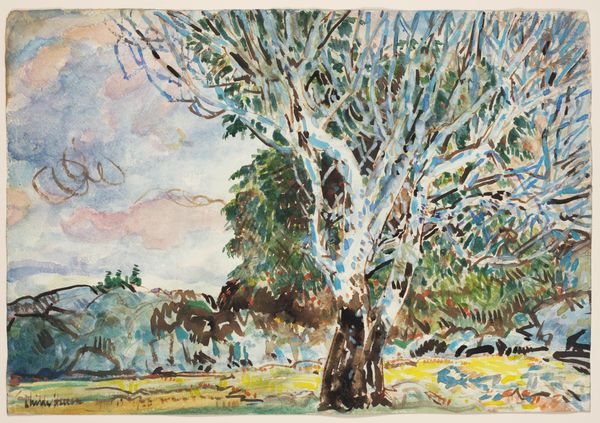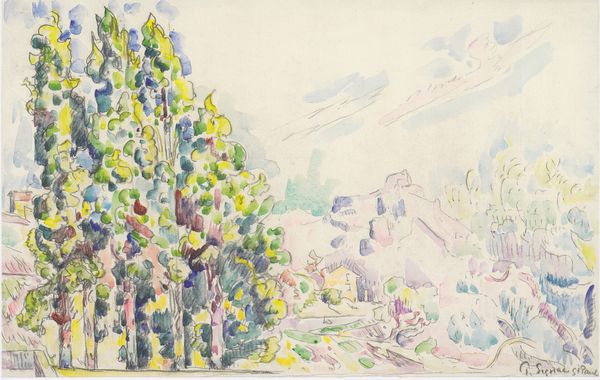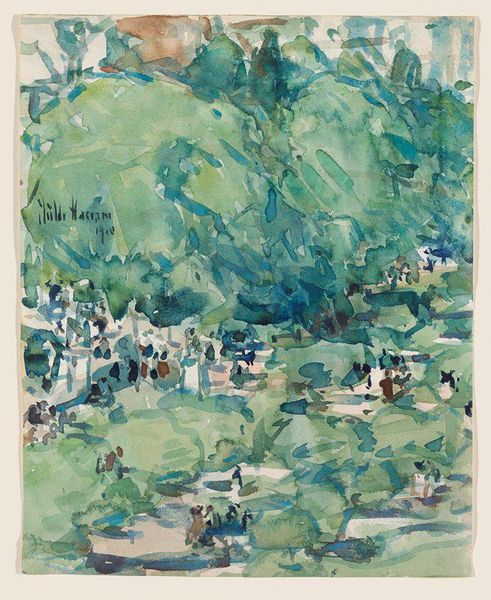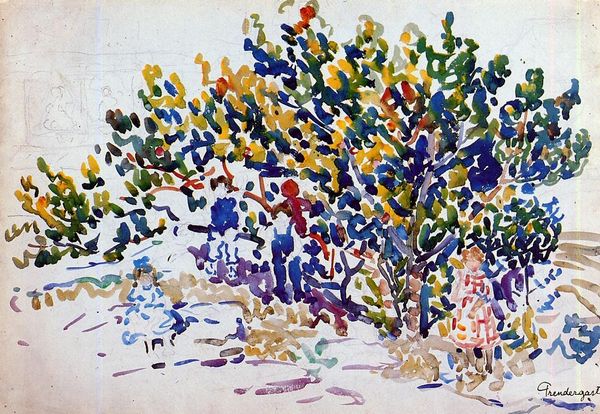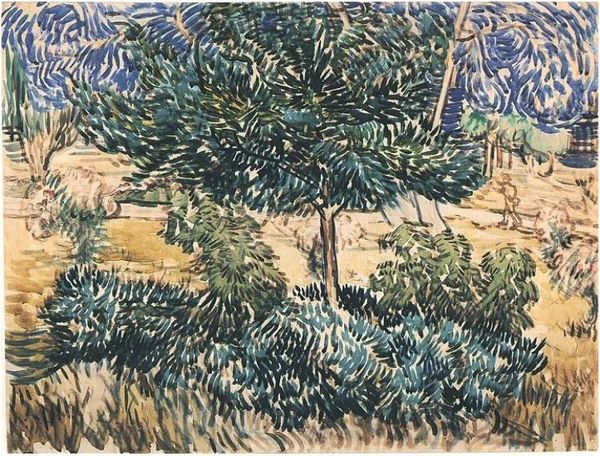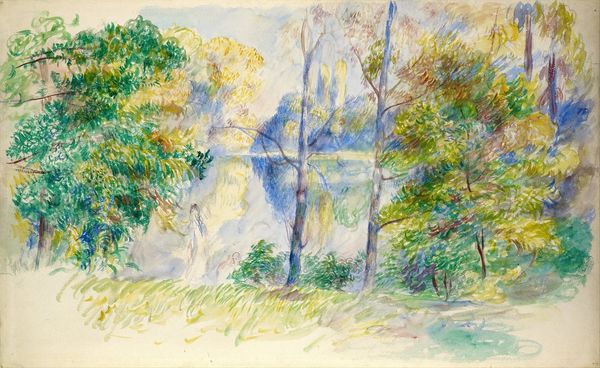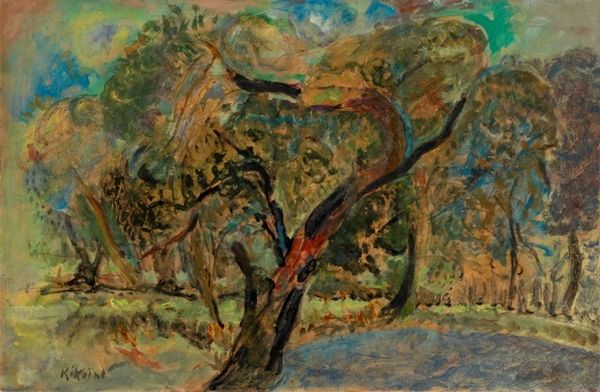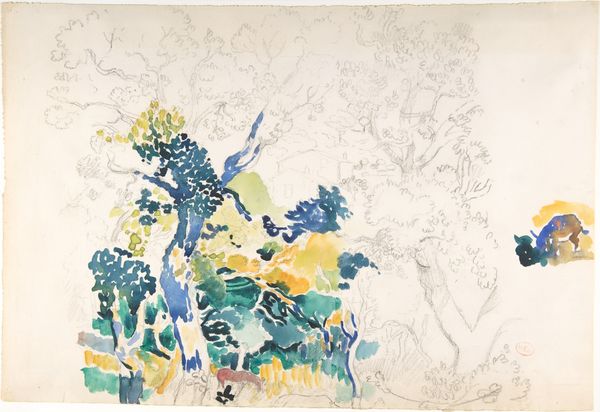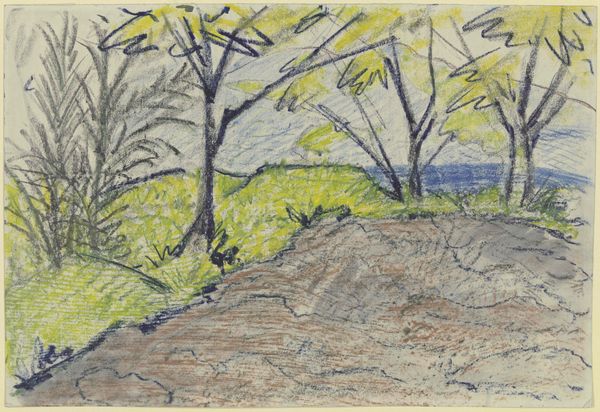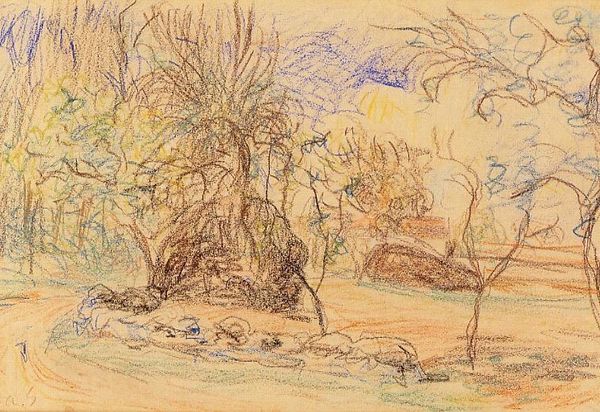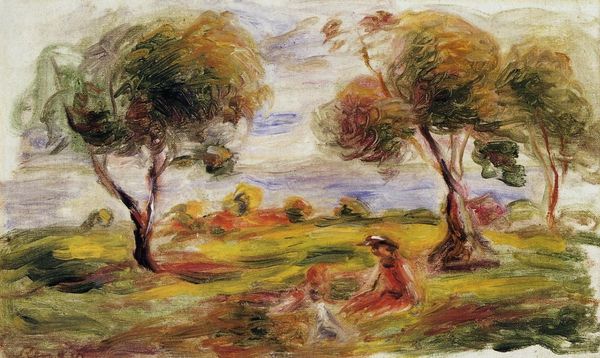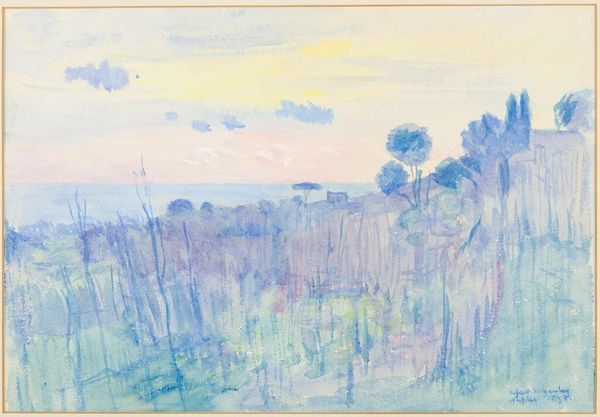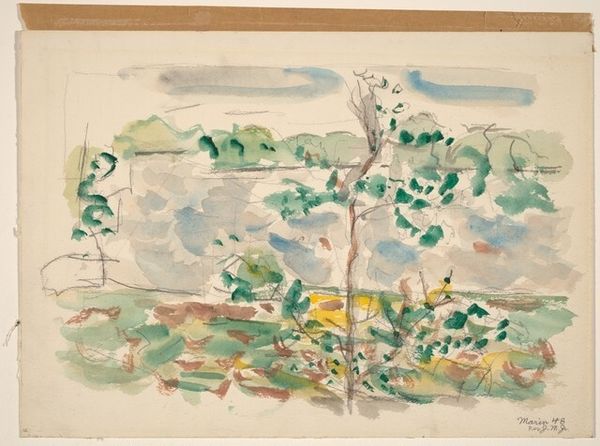
Copyright: National Gallery of Art: CC0 1.0
Editor: So, this is Matt Phillips’ "The Orchard: Apple Tree" from 1961. It's a painting, but also a print. There’s something so serene about this landscape, almost dreamlike. What do you see in this piece? Curator: Beyond its aesthetic appeal, I see a powerful engagement with the history of landscape painting. The plein-air style links it to impressionism, a movement often interpreted as democratizing art, bringing it out of the salons and into the everyday lives of people and to resist academic art of the time. But consider: who had access to leisure and nature in 1961? What did "nature" mean in the shadow of post-war industrialization and early environmental movements? This artwork sits at an intersection. Editor: That's interesting! I hadn’t thought about the politics of leisure. Is it significant that it's an orchard? Curator: Absolutely. The orchard can be viewed as a symbol loaded with meanings - domesticity, labor, cultivation, and even references back to biblical narratives or even back to antiquity’s idea of Arcadia. The visible brushstrokes, those impressionistic dabs of color, move it towards a sense of modernity, questioning the romanticism traditionally associated with landscape. Phillips seems to be actively renegotiating the relationship between humans and the natural world, which speaks volumes about his own cultural moment, the early stirrings of what we now recognize as environmental awareness and justice. Does that perspective shift your view of it at all? Editor: Definitely. It’s more complicated than just a pretty picture. The act of representing nature is inherently political, and Phillips is participating in that conversation, maybe even pushing against it. Curator: Precisely. Art like this can provide us with critical lenses to question our own relationships to nature, capitalism, and representation itself. Editor: I’ll definitely carry that context with me. Thanks for highlighting those social dimensions. Curator: And thank you, that interplay is the most powerful way of bridging historical awareness with today’s ongoing narratives.
Comments
No comments
Be the first to comment and join the conversation on the ultimate creative platform.
